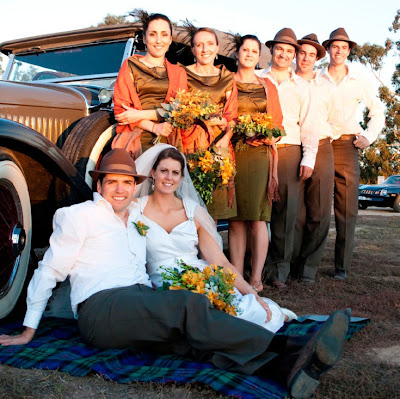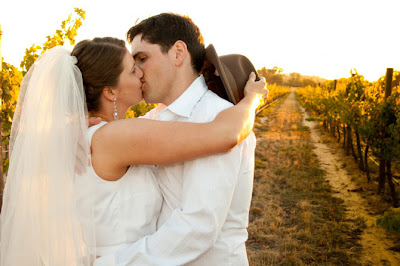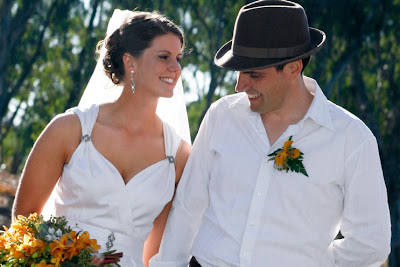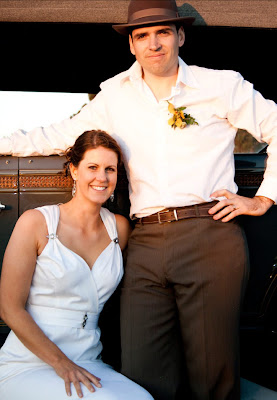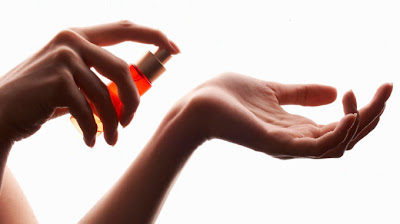
The first says you should stick with a fragrance that your groom especially likes: one he has bought you as a present or one that reminds you both of a special occasion, like your first date or when you got engaged.
The second says that your wedding day is the first day of your married life together and that you should have a special scent to remind you of that day.
Whichever school you choose to go with, there are a few things that you should know about perfume to ensure you not only look beautiful, but you smell that way too!
How to pick the perfect new scent
Firstly, look at the theme of your wedding. If your theme is girly and romantic with loads of flower bouquets, then a floral fragrance would suit. Leather-grouped scents may be better for a ‘greener’ themed wedding (think wood elves and trees!).
Next, have a think about what a smell does to you. Aromachologists believe that certain smells can affect our moods. For example, jasmine and other white flowers are thought to relax, lavender is calming, and citrus scents can lower stress hormones. Anything that can help relax you on your big day is a winner for us!
With this knowledge, visit your favourite perfume shop and ask to try on perfumes in your chosen group. Only try three or four perfumes maximum, otherwise your senses will just get confused. Use each wrist and the inside of each elbow as a test area and then wait 30 minutes, sniffing the perfume at various intervals to see how the perfumes notes work together (see below for more on this).
It is very important to test the perfume on yourself, as different scents smell different on different people. They also smell differently on a piece of paper.
Once you have chosen, make sure you check with your beloved that it is something he likes. And then resist the temptation to just keep trying it!
Lastly, think about co-ordinating your bridesmaids’ perfumes. They should come from the same family, and many recommend using single-note fragrances so as their perfume doesn’t compete with yours!
Notes about notes…
As with music, perfume is described as having three sets of notes. These notes work together to make a type of perfume harmony.
The first is the ‘top note’. This is your immediate impression of the perfume, so perfumers use them to sell the scent! These top notes evaporate quickly.
The ‘middle notes’ emerge just as the top notes disappear and form the main ‘body’ of the perfume.
The ‘base notes’ of a perfume appear as the middle notes fade, and bring depth to the perfume. Often the first impression of the base notes is unpleasant, so the middle notes are used to mask the initial scent. The base notes are not usually apparent until about 30 minutes have passed – this is why perfumers recommend trying on the scent and walking around the shopping centre before buying!
The bouquet
Just as a perfume is made up of several different ‘notes’, it can also be made from several different sources and combinations of those. Often the type of perfume can be described by classifying it, according to its ingredients.
There are traditional and modern classifications for perfume:
Traditional classifications include:
- Single floral;
- Floral bouquet;
- Amber, which refers to the sweet, slightly animalistic scents, often combined with vanilla, flowers and woods;
- Wood;
- Leather, including honey and tobacco;
- Chypre, meaning Cyprus in French. This includes patchouli, bergamot, oakmoss and labdanum;
- Fougere, meaning Fern in French, and built on a base of lavender, coumarin and oakmoss.
And then, with advancement in perfume technology, a new, modern system of classification has emerged:
- Bright Floral, which combines the traditional single floral and floral bouquet categories;
- Green, which is a modern version of the Chypre type, also featuring cut grass and cucumber scents;
- Oceanic, Aquatic or Ozonic, a clean smell, often used to accent floral, oriental or woody fragrances and seen as an androgynous perfume.
- Citrus;
- Fruity, using the fragrances of fruits other than citrus; and
- Gourmand, which refers to scents that feel like they could be eaten. Think vanilla or cocoa bean or anything dessert-like!
So where do these smells come from? The list is endless: bark, flowers, blossoms, fruits (including leaves and peels), leaves, twigs, resins, roots, bulbs, seeds, woods, ambergris (oxidised whale fat), castoreum (from beavers), honeycomb, deer musk, lichens, seaweed, and, of course, synthetic or man-made scents.
Prolonging the life of your perfume
Make sure you keep your perfume away from heat and light. Many recommend storing your perfume in its original packaging to protect it. As pretty as a special perfume bottle is, you may find that decanting your perfume from its original bottle into your own perfume dispenser may result in oxygen getting into your bottle, which can alter the smell of the fragrance.
How to apply perfume
If possible, layer the fragrance: start with it in the bath, as you dry yourself lather in scented moisturiser and finally, apply the perfume.
Apply perfume to pulse points (wrist, crook of your arm and knee, base of your throat, behind your ear) as these are the points where blood vessels are closest to the surface of your skin, which results in these areas giving off more heat which in turn draws attention to the perfume.
Perfume, like heat, rises, so apply it to the crooks of your knees for added effect!
To achieve a ‘cloud of fragrance’ affect, spray perfume on your veil (just check that it won’t stain it!).
For something a little difference, but oh-so-romantic, spray perfume on the palms of your hands. As you move your hands, the fragrance will waft upwards.
Lastly, if you have dry skin, perfume may fade quickly on you, so you should carry a small bottle of your perfume to re-apply throughout the day. Those with oily skin should recognise that perfume may be stronger on you and that you may need to go a bit lighter!
engaged
 CD: Yes, photo booths are new to New Zealand, but are already an international phenomenon at weddings and events. The photo booth concept has been around for years but the old style booths were very slow and the prints took a long time to dry. Modern technology has sped up the process to a point where most clients have not even left the photo booth before their prints are ready and dry!
CD: Yes, photo booths are new to New Zealand, but are already an international phenomenon at weddings and events. The photo booth concept has been around for years but the old style booths were very slow and the prints took a long time to dry. Modern technology has sped up the process to a point where most clients have not even left the photo booth before their prints are ready and dry!